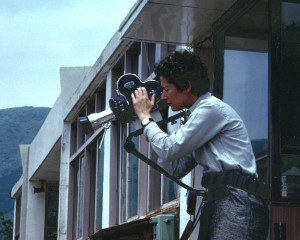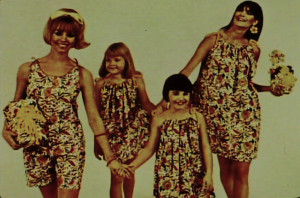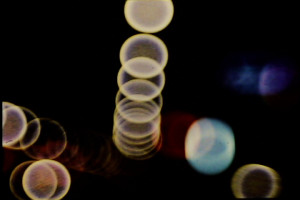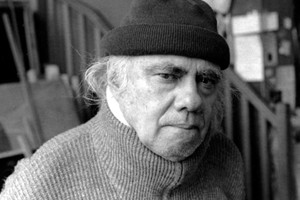Click here to print
Grants to Preserve Films by Women and about US-Cuba Relations
posted January 4, 2017
The archives of 50 little-known woman filmmakers, as well as films about US-Cuba relations and Iowa birds, are to be digitized and made more readily available thanks to grants from The Council on Library and Information Resources’ second round of support in its Digitizing Hidden Special Collections and Archives program, announced today [4 January 2017].
n
 The Council on Library and Information Resources, an independent nonprofit organization, helps libraries, archives, and similar institutions to open up their collections for research, teaching, and learning. Its Digitizing Hidden Collections program, funded by The Andrew W. Mellon Foundation, is a successor to its Cataloging Hidden Special Collections and Archives program, and supports the creation of a virtual national collection of digitized scholarly content. This year’s round of grants were made to 17 projects, most not film related.
The Council on Library and Information Resources, an independent nonprofit organization, helps libraries, archives, and similar institutions to open up their collections for research, teaching, and learning. Its Digitizing Hidden Collections program, funded by The Andrew W. Mellon Foundation, is a successor to its Cataloging Hidden Special Collections and Archives program, and supports the creation of a virtual national collection of digitized scholarly content. This year’s round of grants were made to 17 projects, most not film related.
Chicago Film Archives, Northeast Historic Film, and the Lesbian Home Movie Project have been awarded $322,092 to digitize the work of 50 women filmmakers. Their The Woman Behind the Camera project will create digital versions of home movies and amateur film and video in their collections that women made between 1925 and 1997. Most of the works are original camera reversal (negatives) for which no other copies exist. The films are currently unavailable for off-site viewing; the project’s goals include to challenge the notion that women were simply the subjects of home movies and amateur film, rather than filmmakers themselves.
The Chicago Film Archives says it is “particularly happy to increase exposure to the work of Millie Goldsholl and JoAnn Elam, two twentieth-century filmmakers who are largely unknown.”
The films of Millie Goldsholl (1920-2012) are “playful, political, and highly innovative,” the CFA said. They included industrial films made for clients of Goldsholl’s design studio, and personal films of various kinds: animations for children, experimental films, home movies, and travel footage shot in Japan, Europe, and Israel.

Millie Goldsholl at work (above); a short color, 16mm, industrial film for Magazine Publishers Association called “First Impression” that Goldsholl Design Associates made in the 1960s,and “Night Driving”; and an experimental short that Morton and Millie Goldsholl made on 16mm in 1957 (below, right). Images: Chicago Film Archives
While growing up on Long Island, New York, Goldsholl created elaborate chalk drawings of her pastoral life, then in high school took up painting before attending classes at Laszlo Moholy-Nagy’s new School of Design when the New Bauhaus movement was taking hold in Chicago. That movement influenced her to experiment with different materials, machines, and mediums, including filmmaking. After 1955, when she and her husband, Mort Goldsholl, created the eventually renowned Chicago design firm, Goldsholl Design and Film Associates, she headed its filmmaking division. Her studio accommodated and guided such experimental filmmakers as Larry Janiak, Byron Grush, and Robert Stiegler, who all have archived their work at CFA. A CFA biography of Goldsholl says her and her husband’s films emerged from “a cerebral process that nevertheless thrived on serendipity.” Her filmmaking philosophy, she once said, was “We’d rather make films that have guts than gimmicks – and we don’t equate gimmicks with honest experimentation and unorthodox techniques. Serendipity is something we are committed to.”
 The Goldsholls worked together for 40 years until their company closed in the 1990s. In 2006, Millie Goldsholl loaned films to CFA with the understanding that eventually she would gift them to CFA. In 2010, after she had become ill and unable to manage her own affairs, her son Harry Goldsholl delivered her remaining films to CFA and donated her whole collection to the Archive.
The Goldsholls worked together for 40 years until their company closed in the 1990s. In 2006, Millie Goldsholl loaned films to CFA with the understanding that eventually she would gift them to CFA. In 2010, after she had become ill and unable to manage her own affairs, her son Harry Goldsholl delivered her remaining films to CFA and donated her whole collection to the Archive.
JoAnn Elam (1949-2009) was a central figure in Chicago film innovation whose short experimental and documentary films “capture the spirit and ethos of a political active, feminist, and socially conscious artist,” says a CFA biography. She became interested in progressive politics and the arts at Antioch University in Yellow Springs, Ohio, where she met her first husband, filmmaker Bill Brand, and started making films. After Brand started a graduate-level film program at the School of the Art Institute of Chicago, Elam moved among its community of experimentalists, including Stan Brakhage. She championed the small-gauge film, and was highly political, says a CFA statement. At an early age, she made Rape (1975) and Lie Back and Enjoy It (1982) which used experimental techniques to question screen depictions of women. Both are still in distribution. Her collection of films, says the CFA, is vast and not easily decipherable — for example, a home movie may constitute subtle political commentary. Her films often shade everyday events with political messages. Elam based her unfinished Everyday People (1979-1990) on her experiences as a letter carrier for the US Postal Service in Chicago, including how those shaped her views of labor struggle and activism in the United States.
Her films, along with others in her possession by fellow experimentalists, came to the Chicago Film Archives in 2011 from Elam’s second husband, Joe Hendrix.
Also just announced as a recipient of a CLIR Digitizing Hidden Special Collections and Archives grant is the Estela and Ernesto Bravo Film and Video Collection at New York University Libraries. The institution will receive $97,149 to make available online previously unavailable films from the Bravo Collection.

Conversando Con García Márquez Sobre Su Amigo Fidel (A Conversation with García Márquez About His Friend Fidel), Estela Bravo’s 2014 film from his 1996 conversation with the writer Gabriel García Márquez about his close friendship with Fidel Castro.
Estela Bravo is a U.S. citizen who has lived in Cuba for more than 50 years and has been a filmmaker for nearly 40. Ernesto Bravo is an Argentinian-born physician. Many of their works focus on U.S.-Cuba relations, and tackle such topics as U.S. visitors and residents in Cuba and Cuban immigration to the U.S. They canvas the views and experiences of politicians, activists, cultural figures, and everyday people.
NYU’s Tamiment Library, which holds the Bravo film and video archive, will spend two years digitizing several complete works and dozens of unedited interviews that were conducted in making them. Formats include U-matic and Betacam videotapes and 16mm and 35mm reels.
Another CILR award recipient, Iowa State University, will establish the Avian Archives of Iowa Online (avIAn), a digital portal for Iowa ornithological collections and studies made over the last hundred years. The materials are mostly documents and images, but include seven films. The avIAn site will serve as a space for future collaboration with other archives holding materials pertaining to ornithological collections from Iowa and the Mississippi Flyway.
CLIR will begin accepting applications for a new Digitizing Hidden Collections cycle in mid-January 2017.
— MIAN
Printed from Moving Image Archive News: http://www.movingimagearchivenews.org
URL to article: http://www.movingimagearchivenews.org/grants-to-preserve-films-by-women-and-about-us-cuba-relations/
Click here to print